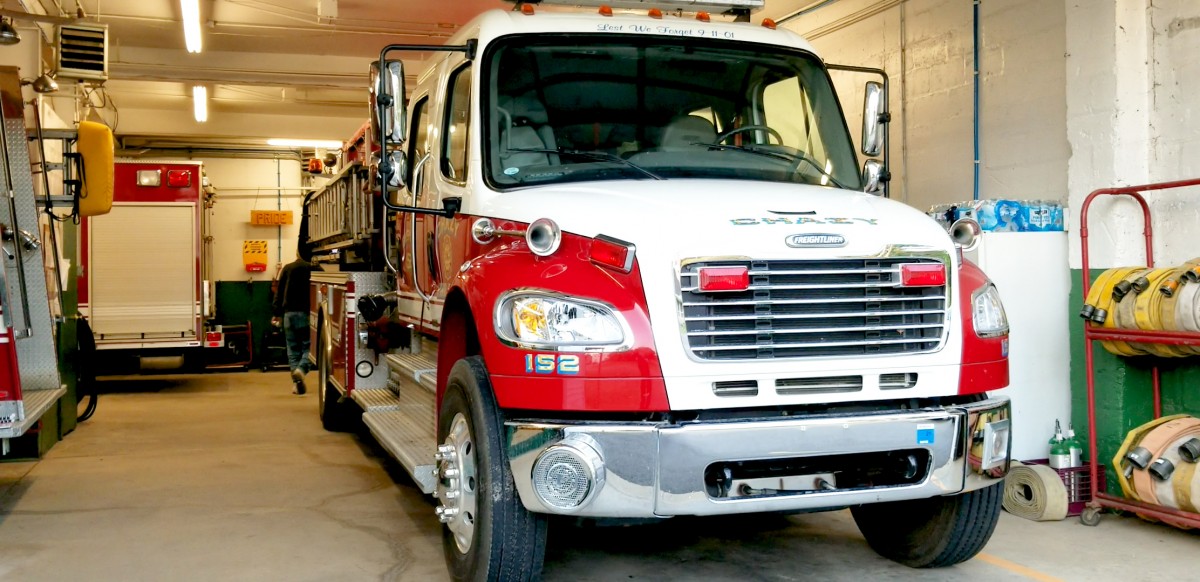According to the National Fire Protection Association (NFPA), every 24 seconds a fire department in the United States responds to a fire somewhere in the nation. The association also reports a fire occurs in a structure at a rate of one every 65 seconds and a home fire happens every 93 seconds, taking more lives each year than all other natural disasters.
Mike Cahoon, Chazy Volunteer Fire Department Fire Chief; and Carol Myatt, the department’s Rescue Captain; explain that many fires can be preventable and in case one does break out in your office or home a fire and safety plan is essential to prevent serious injury or death.
Fire & Smoke Detectors:
Between 2012- 2016, the NFPA reported that smoke alarms sounded in more than half (53%) of the home fires reported to U.S. fire departments. The Association also said that almost three of every five home fire deaths resulted from fires in homes with no smoke alarms (40%) or no working smoke alarms (17%).
Carol says that smoke detectors should be installed on every floor, in every bedroom and outside of every sleeping area. She also reminds you not to exclude the hallways and basements.
The department’s Rescue Captain also points out that there is more to just installing detectors in your home and/or business, batteries should be changed every six months and the units need to be tested monthly.
She goes on to say that smoke detectors, over time, will wear out and need to be changed every 10 years.
Fire Extinguishers:
Simply put, fire extinguishers save lives. Each year, it is estimated that thousands of lives are saved due to the quick and effective use of fire extinguishers.
While there are several different types of extinguishers, in different shapes and sizes, Mike encourages homes and businesses to purchase a Universal Fire Extinguisher, good for three different classes of fire (A, B, C), which should be enough to help put out a fire in your home or business. And just like a fire detector, extinguishers also need to be inspected and maintained.
How to Properly use a Fire Extinguisher:
No matter where you are; home, at work, in a restaurant or a store, more often than naught you have passed by a fire extinguisher. It is one thing to have one at the ready in case of fire, but it is entirely another if you do not know how use one.
Even though it is not rocket science, according to the Federal Emergency Management Association (FEMA), the majority of Americans do not know how to properly use one.
Carol says that if you can remember the word “Pass,” using a fire extinguisher is safe and simple.
She says “P” is for Pull; “A” is for Aim; “S” is for Squeeze and the final “S” is used for Sweep.
Using Space Heaters:
Staying warm during the winter months can be more than a challenge. During the summer, most of us have turned off our heating system and have given very little thought about their operation once we turn them back on.
Mike says improperly cleaned or uninspected boilers, furnaces and wood stoves is one of the leading causes of fire during the winter. The other is the improper use of portable space heaters, which NFPA attributes to 43% of household fires in the United States.
Dryer Safety:
Between 2010-2014, the NFPA reported that fire departments responded to almost 16,000 home structure fires involving clothes dryers or washing machine. The leading cause of these fires were dust, fibers or lint. Carol says your dryer vent needs to be cleaned at least once a year, if not every six months. She reminds you to clean its lint trap before every use.
Rehearsed Safety Plan:
Installing fire detectors, maintaining working order fire extinguishers and knowing how to use them are all helpful tools to prevent a fire in your home and/or business. However, your ability to escape a home or office fire depends on advance planning. This can be the difference in making it out safely, or with injury or even death.
Carol stresses that families and businesses rehearse their escape plan at least every six months, if not more often. In the event of an emergency or fire, people should know where to go and have a meeting place where everyone is accounted for. She also says that whether it’s a home or business, there should be at least two plans in place and that children be taught how to call 9-1-1 and also know where they live and their phone number so that they can relay that information to the operator or dispatcher. 







